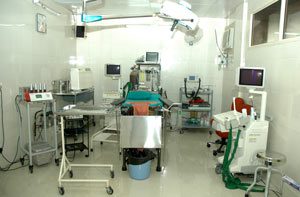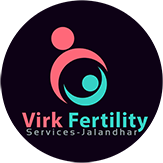In Vitro Fertilization (IVF)
Beginning an IVF cycle is an exciting and anxious time for a couple.In Vitro Fertilization (IVF)
Beginning an IVF cycle is an exciting and anxious time for a couple. Our Center provides couples with the maximum amount of clinical, emotional, and administrative support they will need to complete their “cycle” successfully — whether it results in a pregnancy or not.
The following explanation is meant to simplify that occurs during various stages of IVF
Definitions
- Ovarian Follicle – a small, fluid-filled structure in which eggs develop
- Oocyte – an egg
- Embryo – a fertilized egg that has undergone division cleavage
Stage I : Ovarian Follicle Development through Controlled Ovarian Stimulation
VFS – The center for human reproduction uses fertility drugs that simulate the female partner, natural hormones to develop several normal follicles in the ovaries These medications are:
- Clomiphene Citrate also called Siphene ® or Ovofar ®
- Menogon (HMG), a 50:50 mixture of FSH and LH hormonal administered intramuscularly
- Puregon ® (POFSH): administered subcutaneously
- Gonal-F (RecFSH

Any excess Oocytes that fertilize and develop into embryos at fertilization may later be stored through cryopreservation.
Follicular growth, development, and maturity are evaluated through frequent hormone monitoring and by ultrasounds. Typically, the hormones estradiol, luteinizing hormone, and progesterone are measured through blood tests to evaluate ovarian response. Ultrasound is used several times during a cycle to measure accurately follicular growth and size.
These steps allow the physician team to modify the treatment in some cases and to stop the cycle if the response to stimulation is not satisfactory. Once follicular maturation is achieved, the patient receives an intramuscular injection of human chorionic gonadotropin (hCG), which triggers oocyte maturation and ovulation. Oocyte retrieval is performed approximately 36 hours later. In some the physician may elect to withhold the hCG injection and wait for spontaneous ovulation, referred to as a spontaneous LH hormone surge.
Stage II.- Embryo Retrieval through Puncture/Aspiration
If the last hormone blood test and ultrasound evaluation indicates healthy growth of follicles, then aspiration of mature follicles takes place. This entire procedure takes approximately 30 minutes performed under short general anesthesia at VFS – The Center for Human Reproduction. The physician locates each follicle through ultrasonic guidance and carefully aspirates them. The contents of the follicles are immediately taken to the IVF lab. Patients usually recover for one to two hours following Oocyte retrieval and are then discharged. Progesterone supplementation initiated from the day of the retrieval.
Stage III.- Oocyte Culture, Insemination, and Fertilization
In the IVF laboratory, follicular fluid is examined under a microscope to locate all eggs, which are then incubated in a special media. Generally, semen collection occurs at about the time of the egg retrieval but, in some cases, may be several hours later. The are then added to the eggs in culture, here fertilization occurs. Any resulting embryos are stored in the incubator. and maintained in culture until the time of embryo transfer and/or cryopreservation
Stage IV.- Embryo Transfer
Usually, transfer of the embryos takes place on day two to three post retrieval. The embryos are examined under the microscope and carefully aspirated to a thin transfer catheter. The loaded catheter introduced into the uterus through the cervix where the embryos are placed. This procedure takes a few minutes and does not require anesthesia. The physician administers a mild sedative to provide complete relaxation of the cervix and prevent cramping. The maximum number of embryos to be transferred at one time are 3-4.
After the transfer, the patient rests for two hours prior to discharge and complete bed rest for four days is required. On the sixth day following the transfer, the patient returns for a progesterone evaluation. Twelve days after the embryo transfer, a serum base pregnancy test is taken. During this period, patients are advised perform light activity and remain in contact with the Center. If pregnancy does not occur, the our team reviews the IVF cycle and make specific recommendations for follow-up. The patient will speak with the clinical staff to review and if necessary, to discuss other options.
Cryopreservation
Embryos of sufficient quality that are not transferred can be cryopreserved. The embryologist will select embryos that are suitable for freezing. Embryos that are ideal for freezing have blastomeres of equal size and display minimal or no fragmentation.
A Word of Caution: There is approximately a 68% chance of survival following the cryopreserved embryos. The quality of embryos undergoing cryopreservation is a major determinant of survival. Depending stage of embryo development, frozen embryos are thawed for 2 days before the transfer. The patient is informed of survival of the thawed embryos and posted for a frozen thawed embryo transfer (FET).
